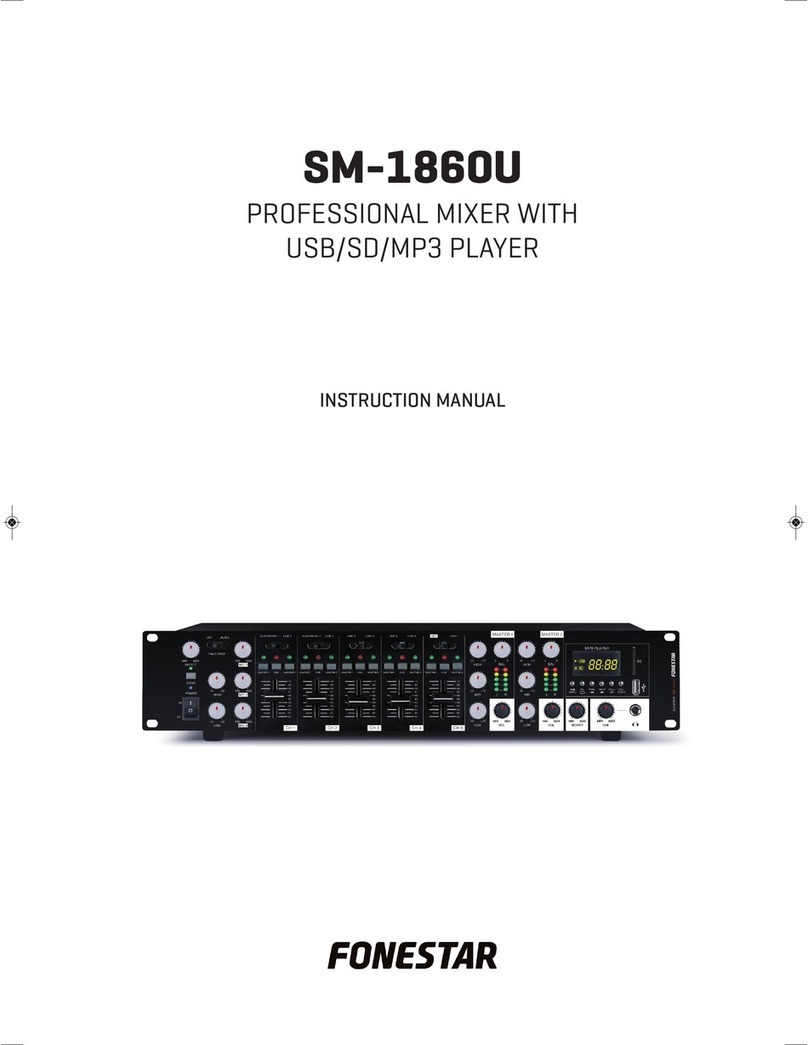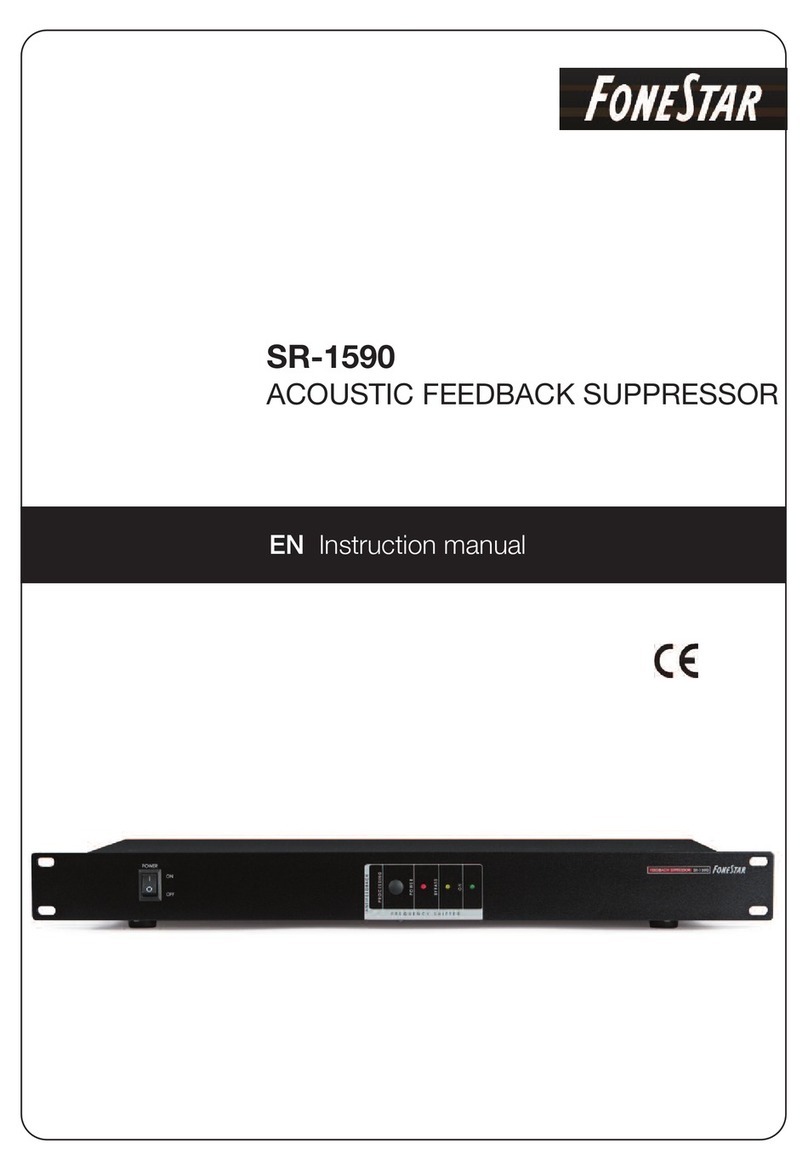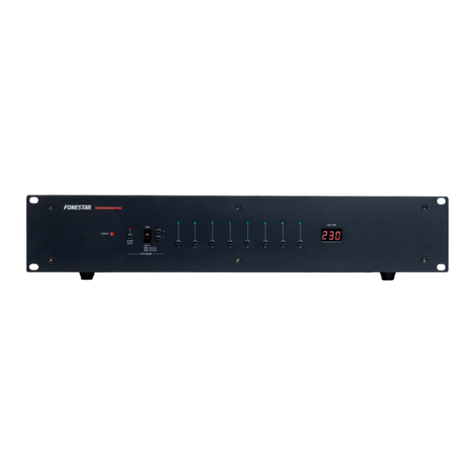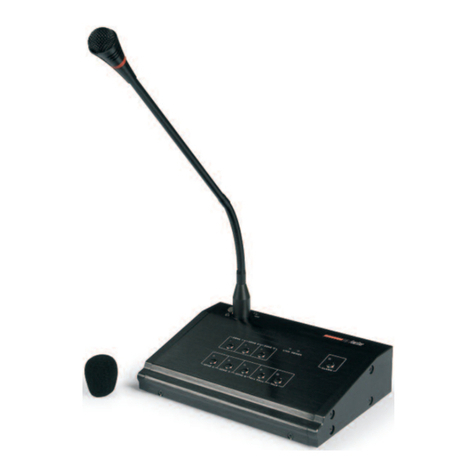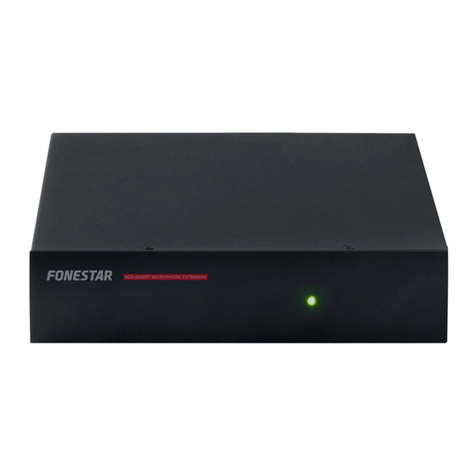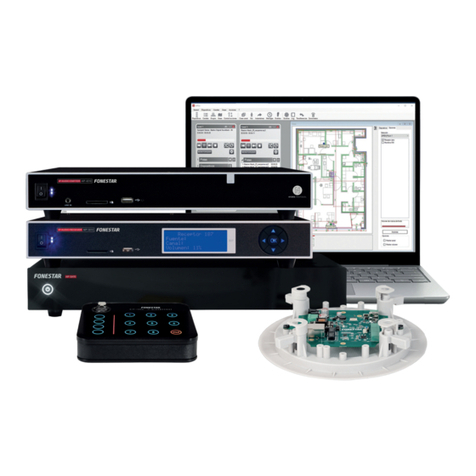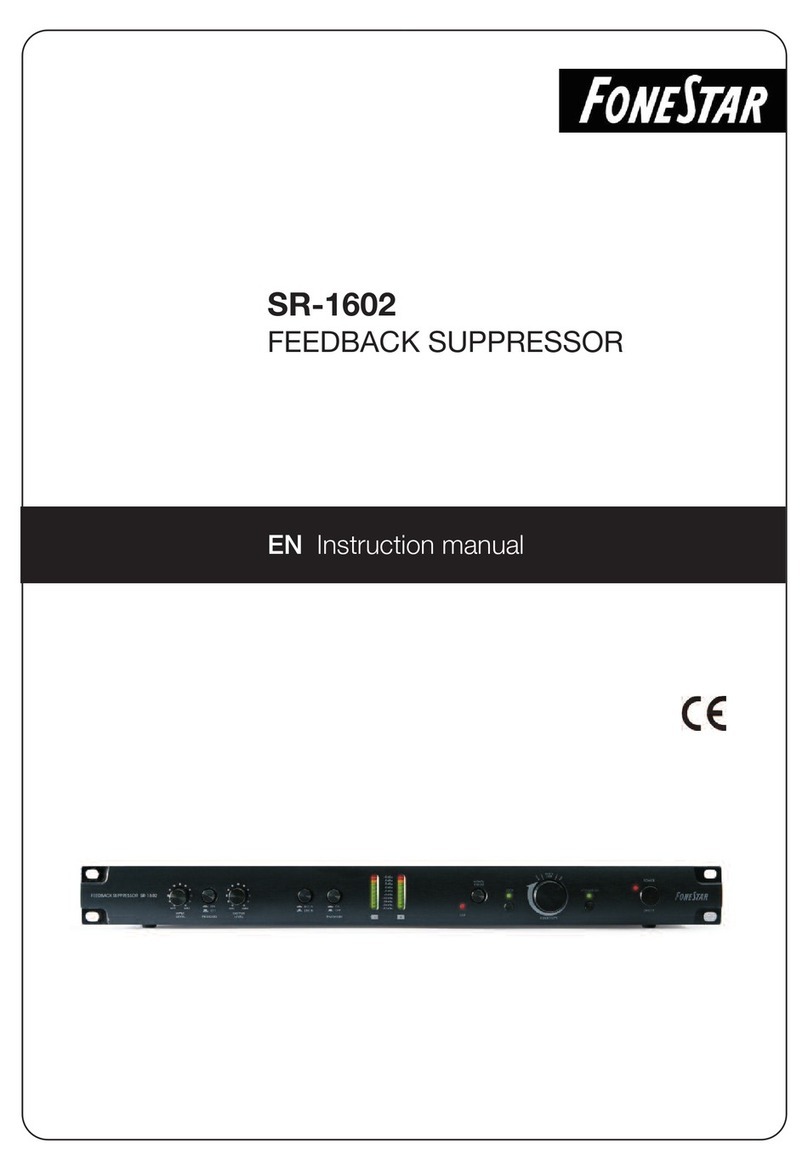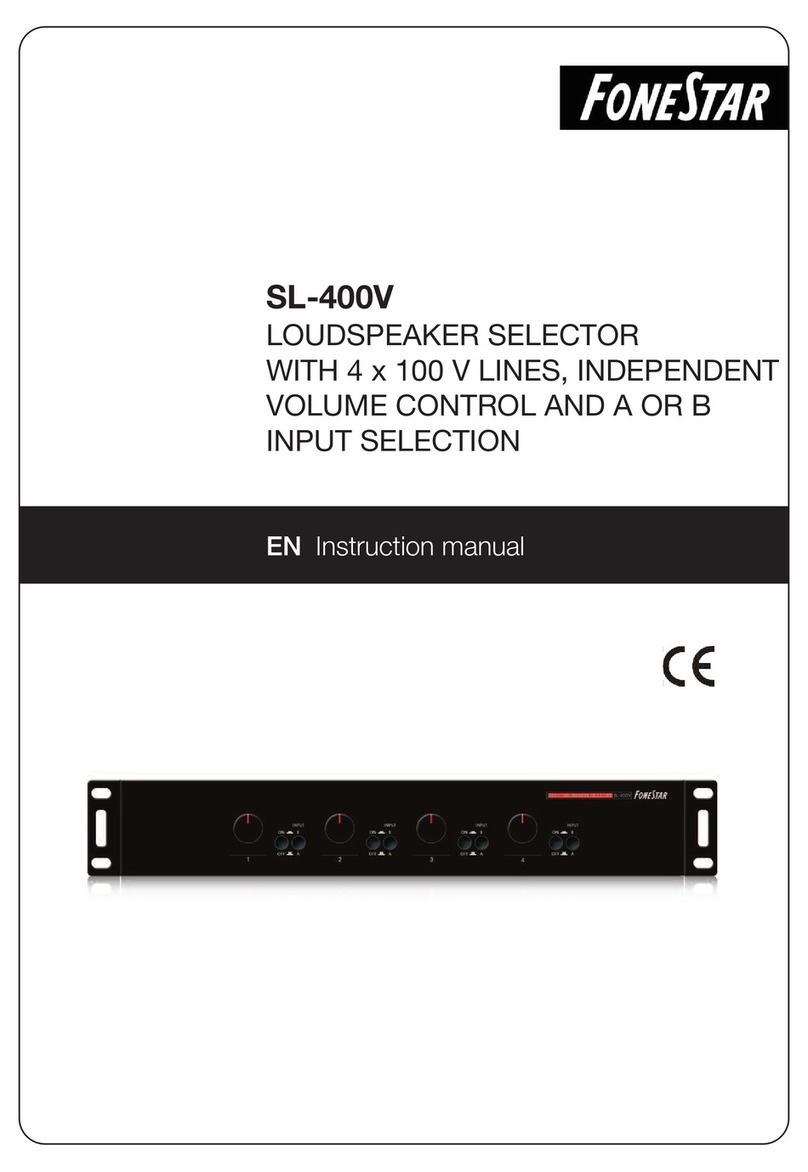
PLAY A BANK
-Within auto mode, select the bank where the scene is stored using the BANK UP and BANK DOWN
buttons.
-Select the duration of each scene with the scroll control designated as SPEED, and the transition time
between scenes with the sliding control designated as FADE TIME.
You can also make use of the TAPSYNC function that allows you to manually set the SPEED value. Press
it once to start the counter and press it again to stop it. The time elapsed between the two presses will be
the new SPEED value.
- Press the AUTO/DEL button to activate the bank playback.
-During playback of one bank, you can activate a different bank by selecting it with the BANK UP and BANK
DOWN buttons.
Nota: If, during playback, you modify the scroll controls, the channel values will be affected, but the
modifications will not be stored.
PLAY A CHASE
-Select the chase you want to play first using the CHASE 1-6 buttons. Chases will be played following the
cyclic sequence 1-2-3-4-5-6, provided they have been programmed and activated.
-Select the duration of each scene with the scroll control designated as SPEED, and the transition time
between scenes with the sliding control designated as FADE TIME.
You can also make use of the TAPSYNC function that allows you to manually set the SPEED value. Press
it once to start the counter and press it again to stop it. The time elapsed between the two presses will
be the new SPEED value.
- Activate AUTO mode to start playback.
Note: during playback you can modify the number of the active chase by pressing the buttons CHASE 1-6.
If, during playback, you modify the scrolling controls, the channel values will be affected, but the modifications
will not be stored.
SOUND ACTIVATED MODE
To turn the auto mode on or off, press the MUSIC/ BANK COPY button and the MUSIC indicators on the
display will light up.
In this mode, the speed of change from one played scene to the next will be determined by the music.
Note: the built-in microphone requires high volumes to operate.
PLAY A BANK
-Within music mode, select the bank where the scene is stored using the BANK UP and BANK DOWN
buttons
- Press the AUTO/DEL button to activate the bank playback.
-During playback of one bank, you can activate a different bank by selecting it with the BANK UP and BANK
DOWN buttons.
Note: If, during playback, you modify the scroll controls, the channel values will be affected, but the
modifications will not be stored.
PLAY A CHASE
-Select the chase you want to play first using the CHASE 1-6 buttons. Chases will be played following the
cyclic sequence 1-2-3-4-5-6, provided they have been programmed and activated.
- Activate the music mode to start playback.
Note: during playback you can modify the number of the active chase by pressing the buttons CHASE 1-
6. If, during playback, you modify the scrolling controls, the channel values will be affected, but the
modifications will not be stored.
- 6 -
EN
DMX-83_MANUAL_(EN_ES_FR_PT)_A4h_20200224-2019.qxp_Maquetación 1 24/2/20 9:26 Página 6
